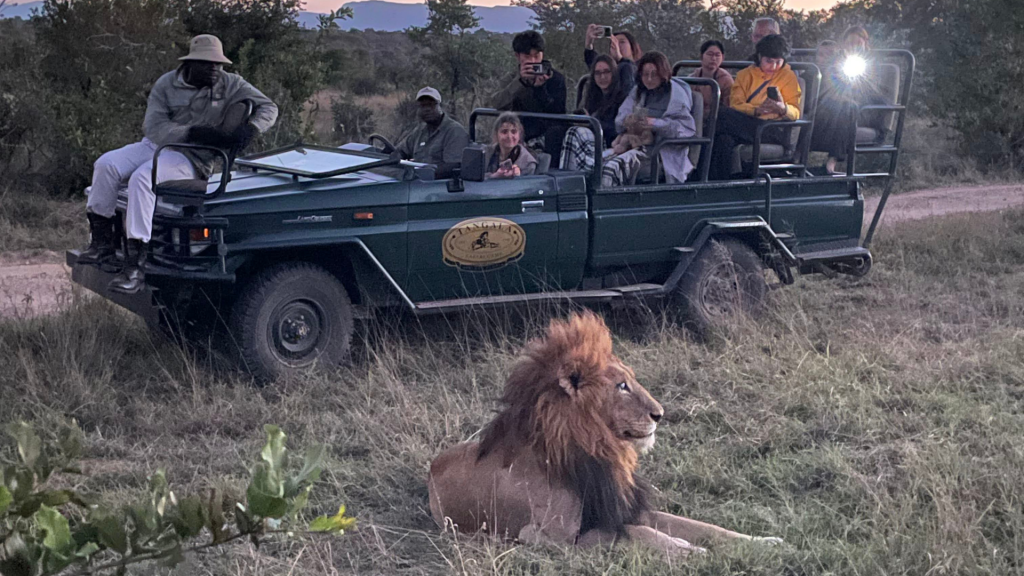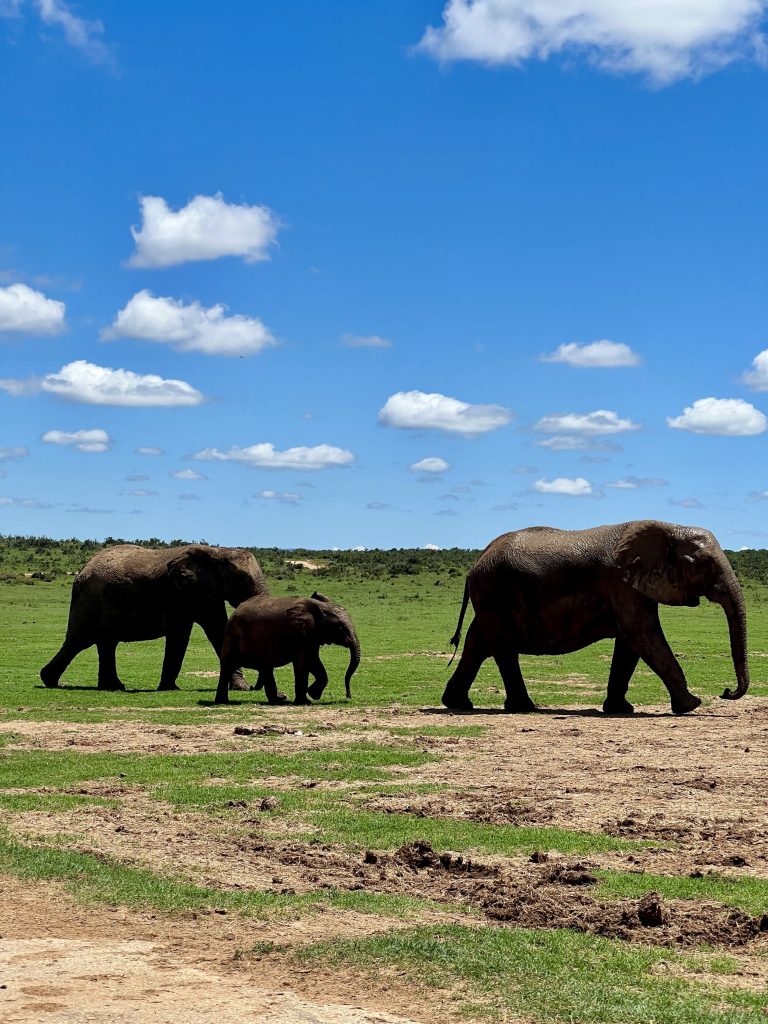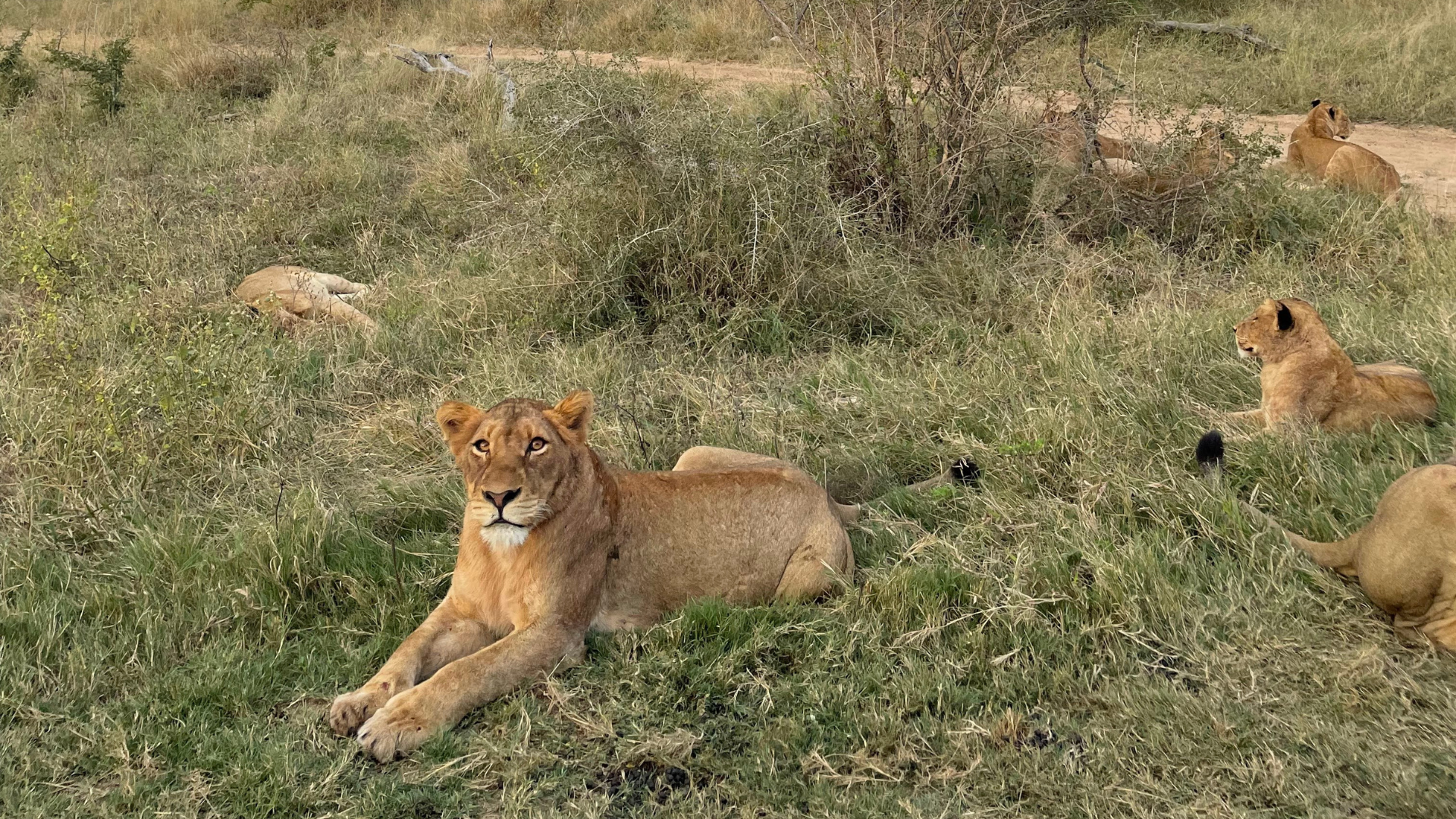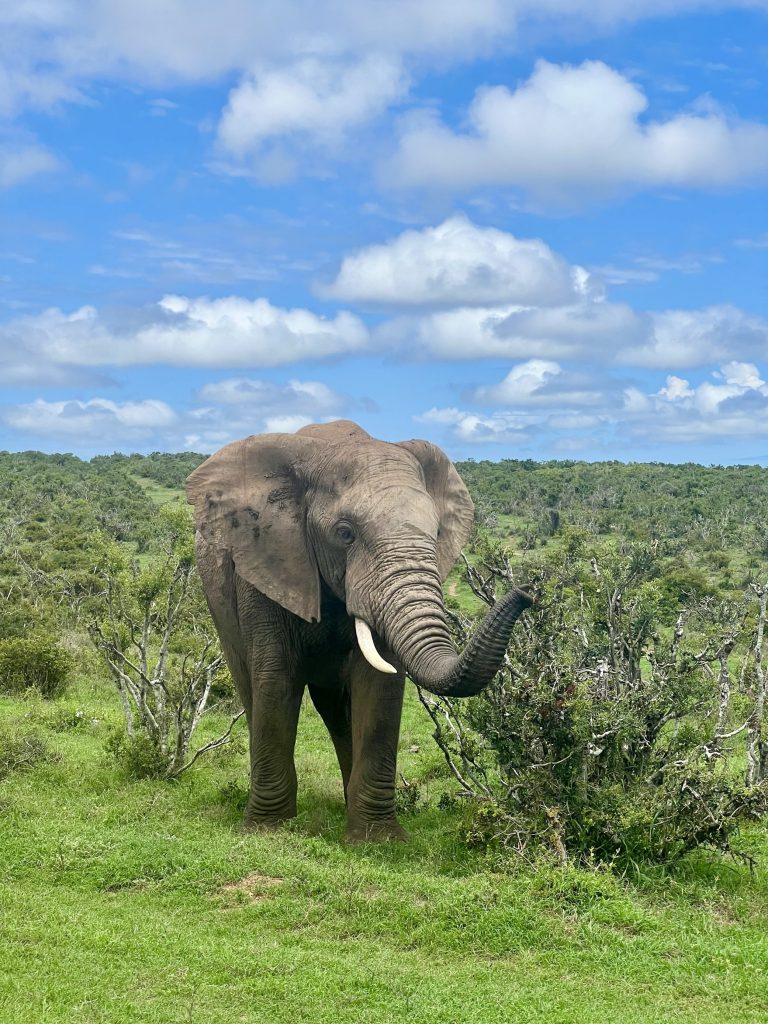
Venturing far from the familiar landscapes of British Columbia, last summer the UBC Forestry students of CONS 454 found themselves amidst the breathtaking biodiversity of South Africa for their field school experience. Surrounded by rugged terrain and diverse ecosystems, their education took on a new dimension. Explore UBC Forestry’s newest field school in South Africa through the eyes of our undergraduates in excerpts from their personal reflections. From encounters with iconic wildlife to grappling with the complexities of conservation efforts, their stories offer a glimpse into the transformative power of immersive learning in one of the world’s most ecologically rich regions.
We grew up with fire, and so did nature
by Abigail Herman
When I visited South Africa, I was not shocked to learn that…the death of savannahs is approaching. The overgrown woody trees are not being dialed back from fires so they continue to grow and expand in range, leaving the open spaces to shrink more and more. This leads to an abundance of species that like the trees (especially Elephants) but less for the species that predate in open spaces or eat softer vegetation like grasses (cheetahs, white rhinos). Being behind schedule for fires in these savannahs have additional consequences. I learned that with more trees, the more elephants there are. Elephants love eating the sweet cambium (bark) of the trees, weakening them and leaving them defenseless from fire. Today, when the forest managers are planning a burn, they have to consider not just the fuel type but also the impact from herbivores. You never want to have a large mortality rate of trees from a prescribed burn, there’s no point to that.
I learned that understanding the fire frequency and fire intensities of the season is their current approach to managing and responding to fires. They agree with starting to plan for finding that balance of human values of sharing the landscape with these natural ecosystem processes because that is what these ecosystems are adapted to. Not just fire, but us. Humans. I find it fascinating that we are taking so long to “allow” for humans (especially and primarily Indigenous people) to be back in. Letting people burn. Letting people take. The forest is used to it (to some extent!). On this most recent trip to South Africa, fire ecologist Navashni Govender taught me how we can manage fires and learn from our history as well as our mistakes.
Wildlife Interactions in the Kruger National Park
by Tiffany Taketa

“Lions, leopards, and rhinos… oh my!” These past weeks observing wildlife interactions, up-close and in-person were better than any book or documentary I have ever seen. When my mom and I would walk through our neighborhood back home, I never understood what she meant by “that dog looks happy.” I couldn’t see it. “Because he’s smiling.” But dogs can’t smile, can they? How do you know they’re not just hyperventilating? I read a book on cat behavior once and I think it helped me understand what they were expressing. But why? I couldn’t tell you.
However, in the Kruger National Park it was a different story… lions cuddling, cubs playing, and even a quick nuzzle or a bonk on the head – I could see the smiles and feel how much they loved each other.
A young elephant practicing his threat displays on us and a wave of the trunk by an adult thanking us for allowing them to cross safely without harming their young.
The soft pitter-patter of a spotted hyena trotting along the road and occasionally stopping to sniff the ground, in search of his pack after escaping from a predator, evident by the patches of bare skin amongst his matted fur.
In addition to specific behaviors, we also learned about how individual wildlife interactions were part of larger socio-ecological processes in the region. For instance, wildlife in the north of Kruger were noticeably more confrontational. In fact, a trend of carnivores preying upon humans, man-eating lions, emerged in the north, unlike in the southern part of the park. But why? In the north, is the border between South Africa and Mozambique, where thousands of refugees from Mozambique crossed through the area, following specific paths, where wildlife have become familiar with their presence and people may have been seen as prey, unlike in the south where there has generally been less people travelling on foot. These sorts of close encounters with wildlife contribute to perceptions of wildlife, such as viewing wildlife as kin, beliefs in witchcraft associated with certain species, and therianthropy (ability to shapeshift into animals). And not only are wildlife and communities interconnected, but the presence of the conservation area itself also influences surrounding communities, whether that is through livestock losses, employment (94% of staff are from villages within 50km of park boundaries), or ability to harvest certain plants and mopane worms, just to name a few things.
Observing wildlife, learning about the reasons for certain behaviors, and the history of the park from our drivers, professors, and other researchers and community members in the park, has changed the way I view wildlife interactions. Even after going back home, I felt like I saw birds and coyotes differently in the way they moved and had a better understanding of their behaviors within a larger context.
Fire in the Savannah
by Maddy Brinkman

As we venture through the park, one can see the evidence of fire and its management. Turning on to a new road I can see a stark contrast, the road dividing unburnt from burnt land. To the left, the landscape reveals a vast expanse of blackened, charred earth stretching out towards the horizon. To the right, untouched grasses of brown and yellow sway gently in the wind, among bushes and trees adorned with dried leaves. Faint traces of smoke mingle with the dust, occasionally wafting into our vehicles as we pass by. There is a certain picturesque quality to the blackened landscape. Surprisingly, despite the recent fire, the ecosystem isn’t devastated. Life thrives amidst the recently burnt grounds. Flocks of birds flutter among the skeletal bushes, darting among the blackened branches. Zebras graze on fresh shoots sprouting through the ash. We even had the fortune of encountering a flock of endangered Southern Ground Hornbills strutting amidst the charred landscape. Fire, far from being devastating, wicked, or deadly, reveals its indispensable role in maintaining the savannah ecosystem. There is much more at play than mere random ignition of fires.
After witnessing the close connection between fire and the savannah firsthand, it becomes clear that fire is not the destructive force we often perceive it to be. Instead, it is a powerful and necessary tool that shapes and sustains the landscapes we know. The intentional use of fire by rangers in managing the savannah ecosystem demonstrates the importance of human inclusion in ecosystem management. By embracing the role of fire and people in shaping these breath taking landscapes, we can advocate for responsible fire management practices and further human inclusion in land management to ensure the continued preservation of these unique ecosystems for future generations to experience.
We are Wild: Why closing the human-nature divide is essential for a future of conservation
by Tara Brudar

The land rover convertible rumbled over cracked dirt roads, jostling the camera in my lap as the sun set below the horizon and the Southern Cross began to greet the navy-blue sky. Sitting beside Respect, our guide and driver, I watched as he confidently accelerated up and over the rough terrain, wincing every time I felt the vehicle tip. Even though it was my third week in the Greater Kruger area with UBC CONS 454, my mind wasn’t convinced that the game drive vehicles could handle the angular terrain they challenged. We were on a sunset game drive in Thorny bush Nature Reserve, a private game reserve nestled between Kruger National Park (KNP) and the communities which line the edges of it. We had spent the last ten minutes parked beside a pride of lions dozing in the long, dry savanna grass.
My travels to Greater Kruger with UBC have challenged my perspective on humanities role in conserving biodiversity. I now understand humans as an integral part of nature, rather than a threat. This trip has allowed me to understand poaching as a symptom of a greater societal issue rather than a result of human greed. Lots of questions remain. How different would the world be if displaced communities were again allowed to live off the land, given secured access to essential resources such as food, water, and shelter? Would poaching continue to be an issue if fortress conservation did not dominate conservation theory around the world? How does co-management of national parks with local communities change biodiversity? My hope is to continue to address these questions throughout my academic career, and work towards conservation models which reconnect people with the land. In this way, I hope that both local communities and biodiversity in Greater Kruger can benefit in the future. I believe that humans are an essential component to a sustainable, just future. Just ask this bull elephant that was hanging out with my peers and I beside our game drive vehicle.